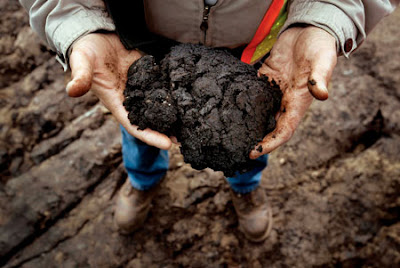 Here is the best simple analogy for describing the challenges facing the bitumen extraction.
Here is the best simple analogy for describing the challenges facing the bitumen extraction.Alberta writer David Finch, the author of Pumped: Everyone's Guide to the Oil Patch, suggests this experiment: “Take molasses out of your kitchen cupboard, put as much sand in there as molasses, stir it up, and then put it outside where it gets cold and thick and won't flow – well, that's what the tar sand is like. It's extremely hard to work with, and it wrecks all your equipment.”
The muddy dirt clogs gears and conveyors; the sand corrodes pipelines. To mine bitumen, the land must first be cleared and drained. Clumps of sand are shovelled out and then mixed with water and heated, to force the hydrocarbon to rise to the top. It is then processed in an “upgrader” to produce synthetic crude before being sent to a refinery and turned into gasoline and heating oil.
Estimates vary, but environmental groups says it now takes two to four barrels of fresh water from the Athabasca plus 750 cubic feet of natural gas and about two tons of oily sand to produce one barrel of oil. The process produces two to three times the carbon emissions of a conventional oil well and creates toxic waste water, called tailings, that cannot be allowed back in the river.



No comments:
Post a Comment